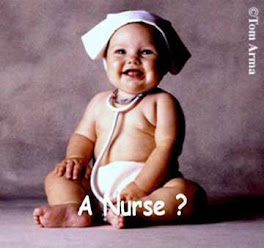
Having TAs for labs from the ELMSNs program has been great. They have one year on us, having been in the clinical setting for several months now. They are prepping for the last of their pre-licensure work, so their tips for doing things are fresh and insightful. It gives them opportunities to teach and mentor and gives us the perspectives we are craving, facing the uncertain days ahead in clinical. The Roadies were discussing how confident the ELMSNs students are now that they have been student nurses for one year. They reassure us by saying we will be the same way too, and sooner than we think.
For instance, a good example of this was during our health assessment lab today. We all had to practice and demonstrate head-waist assessments, verbalizing our thought processes, using the appropriate medical terminology and techniques, while modeling how one comes to certain conclusions on what they are feeling or seeing. I liked this exercise because it allowed us to not only make objective observations (mostly we were observing a lot of "normal" things), but we were also learning about how assessment is so important to the nursing process. We keep talking about how early intervention saves lives, and assessment is a big piece of this. Thinking critically about how someone looks as their status is changing, avoiding a full crash by recognizing signs and symptoms of "going south" and how things look, feel and sound abnormal.
Perhaps the most compelling thing I discovered this week in the reading was how one important assessment tool could have been utilized on my Dad pre-op in 2005, which might have prevented his surgical complications. There is a technique of assessing the ankle-brachial indexes for a high risk patient that helps spot signs of peripheral vascular disease..by taking specific blood pressures and using dopplers at the posterior tibialis and dorsalis pedis pulse points. The test is also helpful in diabetics who present with vascular calcifications. These assessments show whether someone might have problems perfusing O2 or if they exhibit signs of PAD. I can't help but wonder if some of these specific assessment tests had been done on my Dad pre-op, would it have been a good indicator for the use of Lovanox during his AAA repair...but hindsight is 20/20. The only reason I make this comparison about the use of mild amounts of anticoagulants during surgery, was due to the fact that it worked so well a couple months ago and he had such an excellent post op course.
Personally as a patient, I've never had the kind of physical assessment that we are doing on each other in nursing school. This leads me to believe that at some point, people cut corners, recognize obvious things only, and fail to see what may be hidden most of the time. Another student made the comment that she has caught things on rounds that staff RNs have not, only because of the prep she has done at school. Let's face it, students are more eager to do well, spend more time with their patients and are open to learning. At what point does the apathy set in and what should the nurse do who is burned out? I guess each person has to answer that for themselves. I know we are going to run into the super nurses, the ones who like students and want to teach them the right way to do things. I also know that there are going to be difficult people, like anywhere else, who would rather see anyone-except a student on their units. I guess the best approach is the diplomatic approach and when someone wants you out of the way, "step aside". In the meantime, Ms. Pebbles..appears alert, oriented X3 and resting.
We found some nice polyps, enlarged taste buds and a deviated septum today. It was interesting to discover that crepitus can be felt in/around the thyroid gland. The work we are doing on each other is giving us a good idea of what abnormal will look like once we get into the Skilled nursing facility and on our clinical rotations at the different agencies (that's ANA-speak for hospitals).
The feedback from our TA was very helpful today...and palpating the peeps never felt so good. (in a purely professional sense...you know what I mean)







No comments:
Post a Comment